文字サイズ
Tokushima Prefecture
It is widely accepted that first human habitation in Tokushima was approximately 20,000 years ago.
The Jomon period began when the climate started becoming warmer after the ice age*. Inhabitants made a living by hunting, fishing and collecting food. During the Yayoi period* when rice farming started on a full scale, they began to use tools made of metal such as bronze and iron. Tokushima has a significant number of excavated Dotaku*, approximately 50, which is equivalent to 10 % of the total number of Dotaku* excavated in Japan. As rice farming was developed, leaders in the area appeared among the influential people, and tumuli were made to bury them upon their death. The largest Zenpo-koen-fun* (keyhole-shaped tumulus) in Tokushima Prefecture is Sibunomaruyama Tumulus.
After the Taika Reform* in 645, the Ritsuryo system* (law system) was gradually improved and Kokufu* (provincial capitals) were formed. As its name shows, Kokufu-cho in Tokushima City is the area where Kokufu* was formed in the ancient times.
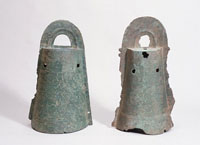
Hagiwara Funbogun (Chambered Cairn) is thought to be greatly related to the origin of tumuli and is found in Oasa-cho, Naruto City. The mound with piled rounded stones influenced the way to build tumuli in Kinai*. Miyadani Tumulus in Kokufu-cho, Tokushima City is thought to be the oldest Zenpo-keen-fun* in Tokushima Prefecture. Three Sankakubuchi-shinjukyo* (triangular rimmed ancient mirrors decorated with gods and animals) were excavated, and it suggests a connection to Kinai*.
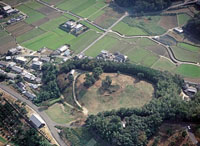
Although the building in the center of Kokufu* has not been discovered yet, a significant number of Mokkan* related to Kokufu* was found when the investigation of Kannon-ji Temple Ruins was conducted. According to the official messages on Mokkan* the center of ancient Kokufu* seemed to be around Kanon-ji Temple, the 16th temple of the 88 Temple Pilgrimage in Shikoku.
In the 12th century, Awa Minbudayu Shigeyoshi based in Awa Kokufu* gained influence under the Taira clan government. After the Kamakura shogunate was established, the Sasaki clan and the Ogasawara clan, warriors from outside Awa, were appointed as feudal lords of Awa. In the Muromachi Period (1336–1573), the Hosokawa clan (originally the Ashikaga clan) gained influence and became lords of Awa. After the Onin/Bunmei War (1467–1477), the Hosokawa clan’s power diminished and the Miyoshi clan, who used to be an influential vassal, came to the forefront. Miyoshi Nagayoshi even assumed control of the shogunate, extending their power to Kinai*. The Miyoshi clan seemed powerful enough to rule the whole country. However, they were defeated by Chosokabe Motochika from Tosa in 1582.
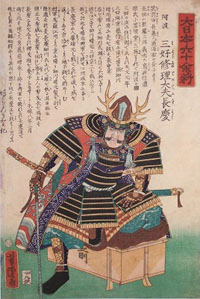
Minamoto no Yoshitsune landed in Awa to attack the Taira clan encamping in Yashima in 1185. It is said that Yoshitsune took advantage of the high winds and crossed from Settsu to Awa in a few hours, which used to be normally three days’ journey. Although the exact place he landed has not been confirmed, it is presumed to be the beach between the southern part of Tokushima City and Komatsushima City. Yoshitsune went across the plain around the downstream of the Yoshino River, destroying Awa Minbudayu Shigeyoshi’s troops (Taira’s side), crossed Osaka mountain pass, the border between Awa and Sanuki, and headed to Yashima.

Aizumi-cho Shozui was set as the base to rule the area by the Hosokawa clan and Miyoshi clan. Shugomachi Shozui Ruins include “Ruins of Shozui Castle” (national historic site) and other ruins around the area. After an investigation, a large scale of ruins of the castle with a garden was found and it is thought to be the residence of the Miyoshi clan.
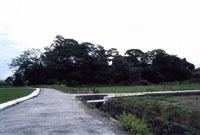
Hachisuka Masakatsu and his son, Iemasa were the vassals of Toyotomi Hideyoshi and were given Awa-no-kuni (Awa Province). They built Tokushima Castle and resided there. The Hachisuka clan was awarded Awaji-no-kuni, which was worth 70,000 koku (unit of land productivity), for the achievement of the Siege of Osaka in winter and became feudal lords with 257,000 koku.
In Tokushima-Han (feudal domain), land surveys were conducted to determine the amount of land tax and censuses, “Munetsukearatame”, were taken to impose labor contributions on their people.

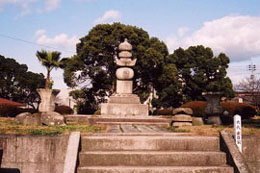
The main industry in Awa-no-kuni (Awa province) in the Edo period (1603–1868) was indigo. In association with the rapid dissemination of cotton, the demand for indigo as dye increased. Indigo plants produced in Awa, where a fertile plain was formed by the Yoshino River, were of high quality. Awa Indigo was sold in Edo, Osaka and all over Japan. Tokushima-Han implemented a monopoly on indigo as well as salt. Other major industries in Awa used to be sugar and tobacco.
During the first half of Meiji period (1868–1912), due to the prosperous indigo industry from the Edo period, Tokushima City had the 10th largest population in Japan when the municipal system was implemented in 1889.
During World War I, 1,000 German soldiers were imprisoned at Bando prisoner-of-war camp (currently Oasa-cho, Naruto City). The director of the camp, Matsue Toyohisa’s humanitarian attitude helped German soldiers and local residents interact with each other. Beethoven’s Symphony No.9 was played for the first time in Japan there. [Depicted in the film, “Baruto no Gakuen” (The Ode to Joy).]
When the lands and people were returned to the emperor (Hanseki-hokan) in 1869, the vassals of the Inada clan in Awaji-sumoto moved to splinter off to form “Sumoto-Han”. Feudal retainers from Tokushima feeling antipathy against them attacked Wakimachi, Mima County (currently Mima City) and Sumoto where the Inada clan was ruling. The incident is called Kogo Incident. As a result, 10 ringleaders were ordered to commit seppuku (capital punishment cutting their own abdomen), Hachisuka Mochiaki, (the last governor of Tokushima) was suspended, and the Inada clan and his vassals were sent to Shizunai, Hokkaido to reclaim the land. [Depicted in the film, “Kita no Zeronen” (Year one in the North)]
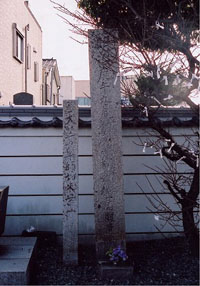
“Tokushima Prefecture” was established in July, 1871 due to Haihan-chiken* (abolition of feudal domains and establishment of prefectures). The prefecture was renamed to “Myodo Prefecture” in November. Kagawa Prefecture was incorporated and became under the jurisdiction of Myodo Prefecture in February, 1873 (until September, 1875). Former Awaji-no-kuni was then incorporated into Hyogo Prefecture in August, 1876 and former Awa-no-kuni became under the jurisdiction of Kochi Prefecture, followed by the abolition of Myodo Prefecture. Tokushima Prefecture was established again in 1880 and has continued to exist until now.
Ice age: a period of long-term reduction in the temperature of Earth’s climate.
Yayoi period: Approximately between the third century B.C. and the third century A.D.
Dotaku: bell-shaped bronze vessels produced during Yayoi period.
Zenpo-koen-fun (key-hole shaped tumulus): burial mounds for influential people with the shape of a combined square and circle.
Taika Reform (Taika-no-kaishin): political reform implemented by Crown Prince Naka-no-Oe, playing a central role after the downfall of the Soga clan.
Ritsuryo system: a system based on the law (Ritsu and Ryo) which was introduced from China.
Kokufu: Places where provincial offices at which provincial governors administered affairs of state in ancient period.
Sankakubuchi-shinjukyo: bronze mirrors with the cross section of their rims being triangle shaped.
Mokkan: wooden strips with letters written in ink.
Kinai: currently the south of Kyoto Prefecture, Nara Prefecture, Osaka Prefecture and the southeast of Hyogo Prefecture.
Edo period: 1603–1867 while Edo Shogunate administered affairs of state.
Meiji period: 1868 (Meiji Restoration) –1912
Haihan-chiken: political reform by abolishing Han (feudal domains) and replacing Han to Prefectures.
Copyright © Tokushima Prefecture, All rights reserved.